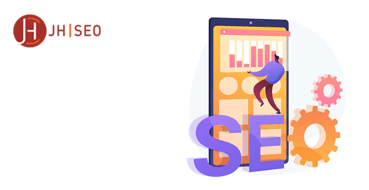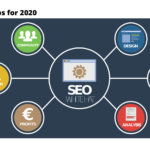In the sprawling landscape of digital marketing, one term that’s perennially at the forefront is SEO – Search Engine Optimization. Considered by many as the cornerstone of online visibility, SEO is a multifaceted chalice that most businesses are aspiring to sip from. But what exactly is SEO marketing, and how does it underpin the core of your digital strategy? We unravel the nuances in this in-depth exploration of SEO marketing.
What is SEO Marketing?
SEO marketing, in its essence, is about crafting and implementing strategies to elevate your website’s visibility in online search engine results in different search engine results pages. This involves understanding how search algorithms work and tailoring your digital presence to meet the criteria that define high-ranking content.
The fusion of SEO with marketing endeavors encompasses a myriad of tactics – from on-page optimization to content marketing – all aimed at placing your brand’s webpage at the apex when users are hunting for information. The ultimate aim is to boost organic traffic, thereby increasing the chances of converting users into customers.
SEO marketing dwells in the intersection of technical prowess and creative flairs. Its proficiency lies in not just driving traffic but driving the right traffic — individuals actively seeking what you have to offer.
What is Search Engine Marketing (SEM)
Search Engine Marketing (SEM) is a digital marketing strategy that involves promoting websites by increasing their visibility in search engine results pages (SERPs) through paid advertising. Unlike Search Engine Optimization (SEO), which focuses on improving organic search rankings through optimization techniques, SEM primarily revolves around paid advertising campaigns.
Key components of SEM include:
- Pay-Per-Click (PPC) Advertising: In PPC advertising, advertisers bid on keywords relevant to their target audience. When users search for those keywords, the ads appear at the top of the search results, and advertisers pay a fee each time their ad is clicked.
- Ad Extensions: Ad extensions are additional pieces of information that can be added to PPC ads to provide more context and encourage users to click. Examples include sitelinks, callouts, and location extensions.
- Ad Copy: Compelling ad copy is crucial for attracting clicks and driving conversions. Advertisers must craft concise, persuasive messages that clearly communicate the value proposition of their products or services.
- Keyword Research: Keyword research is essential for identifying relevant search terms that potential customers are using to find products or services. Advertisers use keyword research tools to discover high-value keywords with significant search volume and low competition.
- Bid Management: Advertisers must manage their bids effectively to maximize their return on investment (ROI) and ensure their ads appear prominently in search results. Bid management involves adjusting bids based on factors such as keyword performance, competition, and budget constraints.
- Quality Score: Quality Score is a metric used by search engines to evaluate the relevance and quality of PPC ads and landing pages. Advertisers with higher Quality Scores typically pay less per click and achieve better ad placements.
- Ad Auction: Search engines use ad auctions to determine which ads appear in search results and their positioning. Advertisers compete against each other based on their bids, Quality Scores, and ad relevance.
The Importance of SEO in Digital Marketing Strategies
The gravity of SEO marketing in the digital universe cannot be overstated. Here are a few reasons why it’s indispensable.
Visibility
When your website ranks high on search engine result pages (SERPs), it becomes more visible to the digital populace. Visibility is the crux of the matter; studies have consistently found that the majority of clicks go to the top few results, leaving the darker, more discreet corners of the web untouched.
Organic Traffic and Trust
Unlike paid advertisements, organic traffic instills a sense of trust in visitors. The sheer empiricism of ranking “naturally” indicates to users that your content is relevant and trustworthy. This trust factor translates into a much higher click-through rate.
Cost-Efficiency
While PPC campaigns and social media advertising occupy their rightful place in the marketing mix, SEO offers a cost-effective alternative. A well-optimized page may incur costs, but the fruits of this labor continue to ripen over time, yielding organic traffic at no incremental cost per visitor.
User Experience
Search engines, both major search engines and minor search engines, have an unyielding passion for user satisfaction. A component of SEO involves enhancing the user experience on your site, a quality that search algorithms, and users alike, look upon favorably. A good user experience often involves mobile-friendliness, faster loading speeds, and relevant content, which are known SEO rankings boosters.
The Evolution of SEO Marketing Over Time
SEO is a dynamic field, ever in flux as search engines refine their algorithms and consumer behaviors evolve. Marketers, in turn, must adapt their strategies to these shifts, or risk falling behind.
The Keyword Era
Once upon a time, SEO was all about keywords—sprinkling them in liberally to attract the algorithmic spiders. This was the golden age of content farms, churning out low-quality articles jammed with keywords. But the times they were a-changing.
The Content is King Revolution
Keyword stuffing and content farms began to be penalized by search engines in favor of high-quality, meaningful content. The adage “content is king” became the new gospel, and SEO strategies pivoted toward the creation of valuable, shareable, and link-worthy content.
The Mobile Mandate
With the explosive rise of mobile devices, search engines like Google began prioritizing mobile-optimized content, underscoring the need for a seamless mobile experience in SEO strategies.
Today and Tomorrow: AI and Beyond
The current epoch is one of machine learning and AI. Search engine algorithms are becoming increasingly adept at understanding the context and intent behind search queries, further signaling the need for sophisticated and nuanced content in SEO marketing.
Understanding SEO Marketing
SEO marketing is more than simply boosting your website’s search engine ranking. It’s a strategic approach to communicating your site’s value to search engines and, by extension, to the online public. Like a well-oiled telescope that enhances your view of the stars, SEO marketing fine-tunes your web content, helping your business stand out in the online galaxy.
The Purpose of SEO Marketing
The primary goal of SEO marketing is to increase the quantity and quality of traffic to your website through organic search engine results. High-quality content is essential, but without SEO, it’s akin to a star without its orbit – unnoticed and unappreciated. With SEO, your content becomes a part of a well-defined, strategic constellation, guiding searchers right to your virtual doorstep.
The Mechanics of SEO
SEO strategies change as search engine algorithms evolve. However, the principles remain consistent: clarity, relevance, and authority. By honing in on these elements, you can develop an SEO strategy that boosts your visibility and amplifies your digital voice.
On-Page SEO
On-Page SEO is the fine art of optimizing content on your website for search engines. It involves techniques that not only appeal to search algorithms but also to human readers.
Creating High-Quality Content
The heart of On-Page SEO is content. From informative blog posts to captivating product descriptions, high-quality content that is original, insightful, and relevant to your audience is the first step in any successful SEO strategy.
Keyword Research and Targeting
Think of keyword research as plotting the course for your interstellar mission. By understanding the words and phrases your audience uses when they search, you can incorporate these terms strategically into your content, guiding searchers to your site.
Content Optimization
Once you have your keywords, it’s time to optimize. This includes ensuring that your content’s formatting is SEO-friendly – think headers, meta descriptions, and alt tags – and that it reads well for human audiences.
Off-Page SEO
While On-Page SEO is about controlling what happens on your website, Off-Page SEO is about what happens beyond it. This involves building a network of backlinks, mentions of your website from others, which serves as endorsements in the eyes of search engines.
Link Building Strategies
Effective link building is at the core of Off-Page SEO. This often involves creating valuable partnerships, guest posting on reputable sites, and ensuring that your content is shareable and worth linking to.
Brand Mentions and Citations
In addition to backlinks, brand mentions and citations across the web can also influence your site’s ranking. The more your brand is recognized and associated with quality, the higher you’re likely to rank.
Technical SEO
If On-Page SEO is the content and Off-Page SEO is the networking, then Technical SEO is the framework that supports it all. It ensures that search engines can access, crawl, and index your website without issue.
Site Architecture and Navigation
Search engines favor websites with user-friendly architecture. Clear navigation ensures that both users and bots can find all your content easily.
Site Speed and Mobile Friendliness
In today’s fast-paced world, site speed is critical. Search engines prioritize sites that load quickly, especially on mobile devices, which is where the bulk of internet traffic occurs.
Technical Elements
From proper HTML structures and canonical tags to ensuring that your site is secure with HTTPS, these technical details might seem small, but they’re significant in the eyes of search engines.
The Dynamic Trio of SEO Marketing: Keyword Research, Content Strategy, and Link Building
In the digital age, where visibility can make or break a business, SEO marketing stands out as one of the most potent tools in a marketer’s arsenal. Search Engine Optimization is not a mere acronym—it’s a multifaceted mechanism that, when correctly deployed, can elevate your online presence, drive organic traffic to your website, and ultimately boost your conversion rates.
This blog post is an expedition through the backwoods of SEO marketing, where we’ll unravel the complexities of strategies like keyword research, content marketing, and link building. These pillars are the backbone of an effective SEO campaign, and understanding their nuances is critical for businesses looking to climb the ranks and stand out in the crowded online marketplace.
Unlocking the Power of Keywords
Why is Keyword Research Vital in SEO Marketing?
The crux of SEO success lies in understanding what your audience is typing into search bars. Keywords are the threads that tie search intent to your content, and meticulous research is the gateway to your audience’s virtual door.
Tools of the Trade: What assists in Keyword Research?
- Google Keyword Planner: A free tool offered by Google that provides insight into the most searched keywords.
- SEMrush: A comprehensive suite of SEO tools that offers a competitive analysis, keyword tracking, and a wealth of keyword data.
- Ahrefs: Another powerhouse for keywords and backlink analysis, Ahrefs gives a 360-degree view of your website’s performance.
Diving Deep: Long-Tail vs. Short-Tail Keywords
- Short-Tail Keywords: Generally 1-3 words, high competition, broad audience.
- Long-Tail Keywords: More specific phrases, lower competition, better conversion rates.
The Craft of Content Marketing
Creating SEO-Friendly Content
- Understand user intent before creating content.
- Incorporate keywords organically in titles, headings, and body text.
- Regularly update content to keep it current and relevant.
Content Optimization for Search Engines
- Ensure your content is mobile-friendly.
- Optimize page load times.
- Employ on-page SEO strategies like meta tags and schema markup.
The Reign of Quality Content
- Engaging, in-depth, and valuable content keeps visitors on your site longer.
- High-quality content drives backlinks and shares.
- Internal linking can boost SEO and improve user experience.
Nurturing Link Building Strategies
Backlinks: The Backbone of SEO
- Backlinks are like votes of confidence for your content.
- Quality over quantity; a few authoritative backlinks are more valuable than many from low-quality sites.
- Monitor your backlink profile and disavow harmful links, using tools like Google Search Console and Ahrefs.
White-Hat vs. Black-Hat Link Building Techniques
- White-Hat: Ethical practices that focus on creating valuable content to earn backlinks.
- Black-Hat: Unethical practices, such as buying links or link spamming.
Guest Blogging, Outreach, and Relationship Building
- Collaborate with influencers and other websites for guest posts.
- Digital PR can land high-quality links from news sites and industry publications.
- Building relationships can lead to natural link building, as others reference and share your content.
Local SEO Marketing
Why Local SEO Can't Be Ignored
- Studies suggest that over 80% of smartphone users rely on search engines to find local information.
- Local SEO helps businesses promote their products and services to local prospects.
Optimizing for Local Search Results
- Include location-based keywords naturally in your content.
- Optimize your site’s meta tags and schema markup for local relevance.
- Create location-specific pages if you have multiple business locations.
The Power of Google My Business
- Complete Every Section: A full profile signals relevancy to Google’s algorithms.
- Reviews and Photos: Encourage and showcase positive reviews and upload high-quality photos.
- Regular Updates: Posts, updates, and events keep your profile active.
NAP Consistency: Small Yet Mighty
- Ensure your business’s name, address, and phone number are consistent across all platforms.
- Citation building helps develop a strong online footprint, with your NAP present on a variety of sites.
In conclusion, the three-pillar approach of keyword research, content marketing, and link building is foundational to a robust SEO strategy that can be tailored to any business size or model. Aiming to understand and master these elements will not only improve your website’s ranking but also provide a better online experience for visitors. As algorithms evolve and competition intensifies, staying informed and innovative in your SEO efforts will be a continual process—but one that yields valuable, tangible results.















